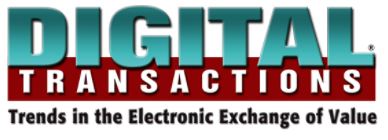Creating a Sustainable Business Model Through Digital Revolving Credit
As originally seen in Digital Transactions, 6/29/21

How Digital Revolving Credit Can Build a Lasting E-Commerce Model
By Tim Harris, CEO of FuturePay
Buy Now Pay Later (BNPL) options have become a staple in the E-commerce marketplace, mostly because they provide merchants and their customers an attractive and flexible alternative to credit cards. This has proven particularly appealing to younger shoppers such as Millennials, or Generation Z consumers up to 24 years old.
Millennials, for example, often look to avoid credit card debt, or simply prefer a more streamlined purchasing experience than what is provided by traditional credit card companies. In the case of the newest Gen Z consumers, many are still building their credit histories and seek financing options that supplement their limited means.

Although digital credit providers gain benefit from being the method of choice for these up-and-coming demographics, certain BNPL providers have also experienced the downside of serving this market. In many instances, this downside is a greater risk of default.
It’s important to note that default risks are often associated with higher-end, one-off purchases, which are the typical domain of installment-based digital credit platforms. This is why some BNPL companies that singularly provide installment-based products find themselves in a tenuous position, and are feeling the heat from investors and even regulators.
When consumers pay for a high-ticket item through a BNPL installment plan, they are emotionally committed to only that purchase. Repayments are divided into equal installments that are typically rigid in structure. Purchasers have little ability to construct the repayment schedule to meet their needs. This scenario—which is not uncommon in today’s economy—is more conducive to default conditions.
Another crucial defect of the installment method is that, once consumers have paid off their balance, that line of credit is closed. The relationship with the consumer is ended. The shopper has no further incentive to maintain a viable association with the merchant. This another critical reason that some installment-based BNPL providers are facing losses. Their models provide less motivation for shoppers to make repeat purchases or develop long-term loyalties.
Yet, according to a recent article in InvestorPlace, BNPL is a “massive untapped market,” positioned for growth due to its support from emerging demographics. Fintech-research specialist Kaleido Intelligence predicts the BNPL opportunity will exceed $680 billion globally in 2025. Indeed, there are substantial profits to be made in this sector, as long as payment companies and the merchants that subscribe to them can avoid default risk.
So how do merchants and providers alleviate that risk? They must focus on a more sustainable business model, such as digital revolving credit instead of installment-based credit. Digital revolving accounts offer distinct advantages over installment products, giving shoppers incentives to cultivate ongoing purchases and build brand loyalty.
A digital revolving credit account allows shoppers to repeatedly tap into their line of credit for ongoing purchases as long as the consumer remains current with payments. That open credit line alone creates an ongoing incentive for customers to develop long-term relationships with merchants. And it provides more opportunity for them to develop an affinity for the BNPL provider. Repayment terms are typically more flexible than installment-based products, allowing consumers to adjust repayment schedules to better fit their budgets. This greater flexibility can reduce the likelihood of default.
Digital revolving BNPL accounts are based on profitable, long-term customer alliances that incentivize repeat purchases. Many successful programs also cater to a $200-$500 range in purchases, which is ideal for subscription-based merchants, compared to the higher-ticket—and higher risk—one-time purchases that are more common with installment accounts.
Effective revolving BNPL offerings look to build a community of merchants where credit lines can be leveraged across a whole ecosystem of brands. This creates a more expansive base of customers with greater potential to generate loyalty. It can serve not just one merchant, but an entire network of vendors that, supported by the revolving credit provider, can cross-sell each other’s products and services and benefit from joint marketing campaigns. For example, a company selling yard-supply products might be able to cross-market their wares to homeowners with a history of purchasing outdoor grills.
In the end, a stable business model depends on sustainable customer relationships in which purchasers have a reason to keep their accounts active. Profits depend on the ability to generate repeat business or subscription-based purchases. And it can’t hurt to better accommodate the financial limitations of cash-strapped Gen Zs or younger Millennials, who will grow into more formidable customers in the future.
Considering that the BNPL market is positioned for explosive growth, companies would be wise to explore revolving credit plans to capitalize on this trend. A more risk-averse model will provide a clearer path to long-term viability—and help merchants establish ongoing brand affinity, lower customer acquisition costs, higher lifetime value, and increased market share.



\